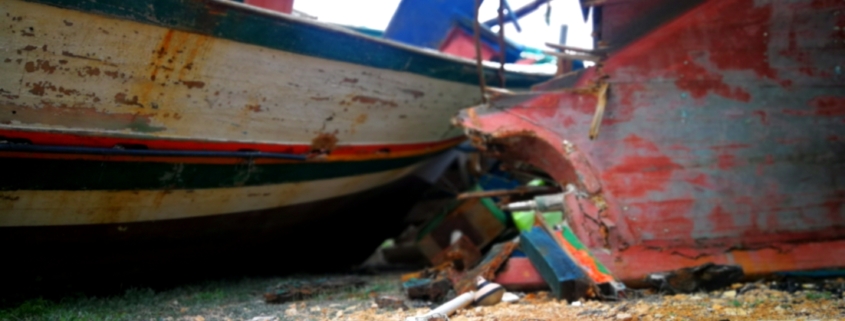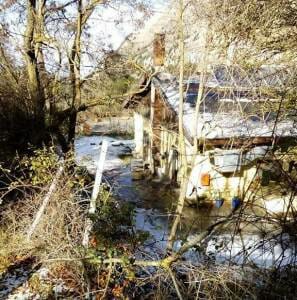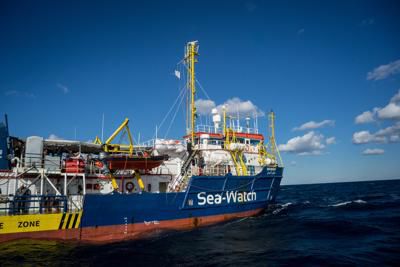Agreements with third countries, charter flights and detention: freedom dies in the Mediterranean
Article first published on November 3, 2022
The racist approach against people migrating is becoming increasingly violent: between isolation, direct flights from detention centres (CPRs*), quick repatriations and rejections, Sicily is the main geopolitical hub of the securitarian government.
The border islands of Lampedusa and Pantelleria
At the center of the Mediterranean, Lampedusa and Pantelleria have progressively assumed the role of buffer zones that serve as places of containment, the first identification and isolation of newly arrived people in Sicily, within a containment and screening approach with mobility control.
In the first reception and identification facilities of Lampedusa and Pantelleria, very similar segregation procedures are implemented: detention – justified by the reasons of identification – seizure of cell phones and personal belongings, constant surveillance, up to surveillance measures that do not allow free exit from the facility.
In fact, the centers are now permanently closed and separated from the social fabric: in Lampedusa, militarization has steadily increased to the point of erecting walls delimiting the perimeter, which effectively prevent any exit; in Pantelleria, a ban on leaving the center is now systematically imposed with fixed surveillance at the gate. The impossibility of communicating with the outside world, via phone calls or the Internet, isolates people even more and makes it impossible for them to contact either family members or lawyers and associations. The timeframe of identification procedures means that people can remain locked in the center for a long time, especially in summer, when overcrowding creates situations of promiscuity and abandonment.
While in Lampedusa a more normalized hotspot approach has governed migrant screening procedures for years, in Pantelleria a more informal approach has long dictated the first reception of people. But as of last summer, even the role of Pantelleria as island-boundary is gradually being formalized through the implementation of a more structured approach to sorting migrants: the center has expanded with a new building next to the first aid center located at the former Barone Barracks and includes seven housing modules, which are provided by the European agency EASO, with a total capacity of 40 places.
Although it is unclear whether the presence of Easo and Frontex – which already has two containers where it conducts interviews and 6 active operators in the field – will be further intensified and enhanced on Pantelleria. it seems clear that even on the Trapani side of the Sicilian border, procedures of the arrival management seem to refer to an approach with greater capacity for first screening and sorting between “economic migrant” and asylum seeker.
A new “crisis point” has emerged together with increased arrivals from Tunisia on the island of Pantelleria. It has consequently activated more frequent practices of criminalization, especially for Tunisian citizens. They still represent the nationality most subject to repatriation due to the agreements between the Italian and Tunisian government.
From the quarantine ship to charter flights directly at the CPRs*
Many of the people who are deported from the national territory through repatriation are taken to the CPR, from where they are returned to their countries of origin.
Until last May, the intermediate step from the hotspot center to the CPR was a stay on a quarantine ship. A GNV cruise ship that isolated people who just landed from the sea in cabins for different lengths of time. Officially regarded as a tool for the health surveillance of people who landed in Italy and for limiting the spread of Covid 19, the quarantine ship constituted a border device, where measures of legal channeling and arbitrary selection facilitated the deportation procedures of migrants for as long as two years. In fact, the quarantine ship used the rhetoric of health care to practice policies of mobility control and management, to the harm of the mental and physical well-being of the detained persons. Until that time, direct access of the citizens to CPRs took place upon the landing from the quarantine ship, with transfer by bus or plane to various Italian cities where detention facilities are located.
With the decommissioning of the quarantine ships as of June 1, 2022, it is noted that the government’s allocations involve charter air services that directly transfer people from Lampedusa to Italian CPRs. The detention chain is thereby enhanced and expedited. The direct flight from Lampedusa to the CPR automatically connects the two mobility control hubs, ending with repatriation flights to Tunisia.
In August, record levels were reached as reported by Altraeconomia’s survey: if the weekly flights for the repatriation of Tunisian citizens from Italian airports to Tabarka airport are considered as well, more than 200 people were transferred directly from Lampedusa to the CPR on ten flights for a total cost of 1.5 million euros. These are very high costs also in terms of the protection of rights. Those who pay the most are Tunisian nationals, who made up 64 % of the total number of entries into the CPRs. They also face half the time for examining asylum applications and, above all, a kind of automaticity in the assessment of people’s individual histories.
The space and time of imprisonment: isolation and deprivation of liberty
Health surveillance because of Covid 19 – that forced migrant people to live segregated in the middle of the sea for weeks – has unleashed and progressively legitimized forms of deprivation of liberty and violation of fundamental rights. The restraining function is manifested not only in the physical impossibility of being able to leave the devices, but also by the geographical location and nature of the devices. In fact, the facilities are located at the external borders: from the islands of Pantelleria and Lampedusa, to the quarantine ships that gravitated in the Mediterranean, to the aerial cabins until the detention centers, the morphology of space is used in a functional way to ensure containment and to carry out quick repatriations that hinder an external intervention. In fact, these are all places inaccessible to third parties, where inevitably the right is suspended and where any form of monitoring of the situation, safeguarding and socio-legal protection is impossible.
Agreements with third countries, NGOs and shipwrecks
The use of quarantine ships first, and charter flights for the CPR later, stands in continuity with the functions of the hotspot device and the European governance of migration. A political governance that finds its rationale in the outsourcing of borders and agreements with third countries. The Italy-Libya Memorandum, which will be automatically renewed these days for another 3 years if the Italian authorities do not cancel it, has been financing since 2017 cruel, inhuman and degrading treatment, sexual violence, forced labor and killings of migrants, as well as push-backs at sea and arbitrary detention in Libyan lagers.
Also worth mentioning is the agreement between Italy and Tunisia from 2020 that agreed not only on fast and semi-automatic repatriation procedures for Tunisian nationals but also on border surveillance and blocking departures in the Mediterranean in exchange for substantial funding to the Tunisian government.
Because of these policies, a number of lifeless bodies, victims of shipwrecks, have arrived in Lampedusa in October, belonging to migrants probably of sub-Saharan origin who had left from the Tunisian town of Sfax: 12 bodies in total, including at least two women and four children. Another three bodies, probably of Tunisian nationals, arrived in Marsala following a shipwreck on October 11. Many of these bodies have not yet been identified and are still abandoned in local mortuaries; others have already been buried in the province of Agrigento. This happens in the very month known for October 3, a date nationally recognized as “Day of Remembrance for Victims of Migration,” which increasingly seems to be a hypocritical celebration of the Italian government commemorating the collateral victims of its own policies. In these very hours – off the coast of Sicily, three boats, the Humanity1 with 179 people on board, the Ocean Viking with 234 shipwrecked people and the Geo Barents with 572 rescued – are stranded at sea awaiting permission from Italian authorities to enter a port of call. Meanwhile, the health conditions of those detained at sea – about a thousand of them – are becoming critical with each passing day, and their existence, once again, depends on inter-state tug-of-war. In fact, a few days ago, newly appointed Minister of the Interior Matteo Piantedosi served a directive to the top management of the Police and Port Authority, informing them of the stop for rescue vessels. Doing that he is ushering in the repressive line that the government intends to pursue against migrant people. This is in continuity with the approach of the former Minister of the Interior Salvini: in a communication that the Farnesina had sent to Norway and Germany, flag states of Humanity and Ocean Vicking, it had in fact been stated that the conduct of the two boats sailing in the Mediterranean with the purpose of carrying out search and rescue activities were not “in line with the spirit of European and Italian regulations on security and border control and the fight against illegal immigration.”
Sicily in the center of the war at sea
Renewing agreements with Libya – internationally condemned for very serious violence – and continuing to recognize Tunisia as a “safe” country – in a context where the authoritarian government of Kais Saied persecutes political opponents and criminalizes freedom of expression – are practices that express well how the Italian government is willing to pay a very high price in order to stop migrants, who are stopped at any human and economic cost.
It is precisely on Tunisia that we need to turn our eyes very carefully: since the beginning of the year, according to the Tunisian Ministry of Defence, 22,500 people of various origins have been intercepted and blocked along the Tunisian coast by national military boats in an attempt to leave for Italy. In this regard, within the Border Management Program for the Maghreb Region (Bmp Maghreb), an initiative worth millions of euros has been promoted. It is in collaboration between the International Center for Migration Policy Development (Icmpd) and the Italian Ministry of Interior to “strengthen” the technical capabilities of the Tunisian Coast Guard in the work of intercepting and blocking irregular migration, with the help of military instrumentation. This is aimed at improving the ability to “protect, monitor and control the borders” while ensuring “the free movement of bona fide travelers and goods.” A militarization of the border further supported logistically and economically by the 11 million that the Italian government offered to Tunisia in 2020 – in the area of countering ‘irregular immigration. This money was offered in exchange for the strengthening of border control through the refitting of Coast Guard boats and the provision of means, in a framework of cooperation with the Tunisian Ministry of the Interior. All of this was introduced in order to stop arrivals and create an increasingly impassable wall at sea, as documented by Irpimedia’s investigation that traces the intricate path of Italian funding to Tunisia.
Italy’s policy line for the coming months has already been announced: stop to departures in the Mediterranean and quick repatriations are the prerequisites that consolidate the border externalization approach taken in an increasingly Euro-Mediterranean control perspective.
The main geopolitical junction of these policies remains Sicily, the intermediate land. It continues to be a point of arrival, identification, isolation and detention where authorities in theory and practice increasingly normalize and endorse the distinction between “bona fide travellers” and criminalized migrants, thereby destined to be rejected, humiliated and left to die.
At the center of the world’s deadliest migratory route, facing two countries from which thousands of people depart, the Sicilian canal will once again serve as a militarized scenario where governments’ war directives are made concrete: in Our Sea there will be staged yet another barbaric, racist-driven war that – to the sound of rejections and port closures – will affect those who continue to cross borders at the cost of their lives.
*CPR: Centro di permanenza per il rimpatrio – Detention and repatriation center
Silvia Di Meo
Borderline Sicilia
Translated from Italian by Angela La Cognata




